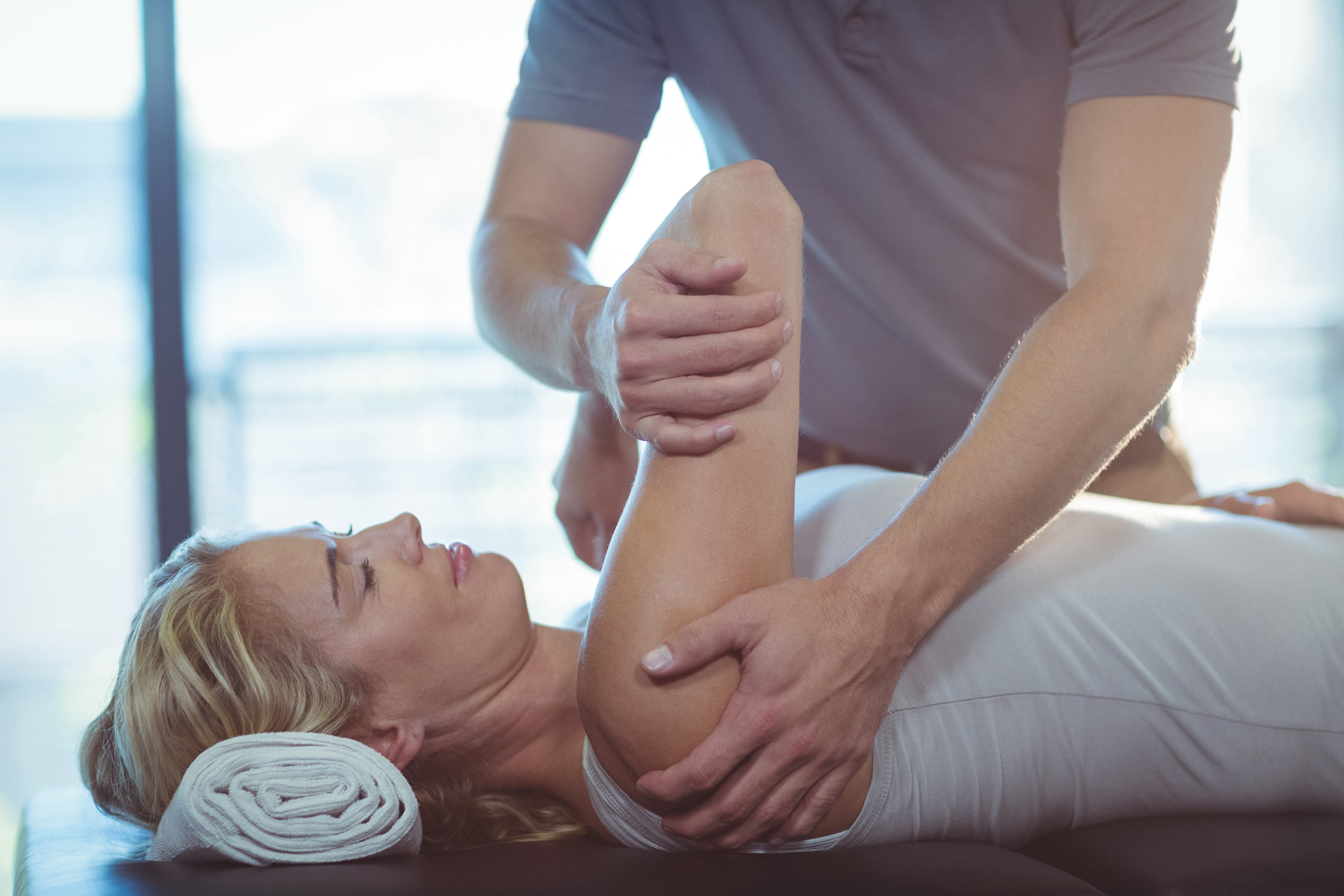Scapular Mechanics
 Having shoulder pain is a common reason patients come into our NYC Physical Therapy clinic. Often, pain presents into the shoulder secondary to issues with the mechanics of the scapula. The scapula’s common name is the “shoulder blade.”
Having shoulder pain is a common reason patients come into our NYC Physical Therapy clinic. Often, pain presents into the shoulder secondary to issues with the mechanics of the scapula. The scapula’s common name is the “shoulder blade.”
In this blog we are going to go over how the scapula influences the shoulder joint. After, we are going to go over an issue called “scapular winging” and some interventions to address this impairment.
First let’s go over proper mechanics of the shoulder. The shoulder girdle is composed of the clavicle, the humerus, and the scapula. These bones work dynamic to help the arm move in multiple planes of motion. When the pt is evaluating their amI am looking at how the bones move with one another. There is something called a scapulohumeral rhythm that I will look for.
The first 30 degrees of shoulder abduction should come solely from the humerus. After 30 degrees, the scapula should start moving with a ratio of 2:1 movement of the humerus: scapula. If the scapula starts moving too quickly or too slowly it gives us clinicians insight into what might be causing the movement disorder.
A common observation we see is the scapula not laying flat on the rib cage. This already sets the shoulder up for poor mechanics. This is what we call “scapular winging.” This is due to weakness in a muscle called the Serratus Anterior.This Serratus Anterior is a muscle that lies on the rib cage and attaches medially, onto the scapula. It is responsible for the upward rotation of the scapula as we elevate our shoulders.
We are going to go over some exercises to help address the serratus anterior. If you are experiencing shoulder pain, consider scheduling an appointment with a physical therapist or chiropractor in our NYC office.
Exercises to Aid Shoulder Pain
Kneeling push up plus
- Getting into a kneeling plank
- Arms should be locked out
- Move the scapulas down towards the floor
- Slowly come back to starting position
- 2 sets of 20 reps
Push up plus
- Getting into a tall plank
- Arms should be locked out
- Move the scapulas down towards the floor
- Slowly come back to starting position
- 2 sets of 20 reps
Place a towel on a wall
- Press into the towel with your palm
- Keep the pressure and slide the towel up and down the wall
- 3 sets of 15 reps
Scapular hugs
- Place a band around your back over your shoulder blades
- Wrap your arms forward and slightly towards midline like you’re give a hug
- Come back to starting position
- 1 set of 30 reps
Plank SA slide kneeling:
- Place a towel under knees
- Get into kneeling plank
- Press through the shoulders to move backwards
- Pull through the shoulders to come to back
- 3 sets of 8 reps
SA slide in full plank:
- Place a towel under feet
- Get into full plank
- Press through the shoulders to move backwards
- Pull through the shoulders to come to back
- 3 sets of 8 reps
SA press with rotation in plank:
- Get into a tall plank
- Press through palms to round the shoulders
- Open to the left side, going into a slide plank
- Rotate through center and to the other side
- 2 sets of 10 reps on each side
Kneeling plank arm reaches:
- Get into a kneeling plank
- Place a towel under one palm
- Reach forward with palm
- Come back to neutral
- 2 sets of 10 reps
Tall plank arm reaches:
- Get into a tall plank
- Place a towel under one palm
- Reach forward with palm
- Come back to neutral
- 2 sets of 10 reps
Elbow press:
- Wrap a Theraband around your back and over the elbows
- lay down on your back
- Press elbows forward into the band
- Hold for 2 seconds
